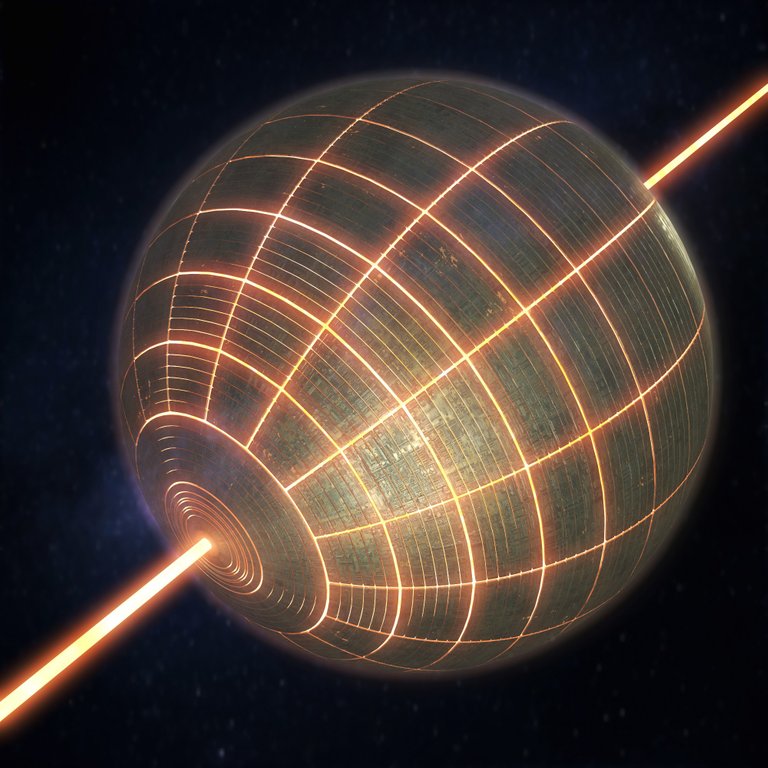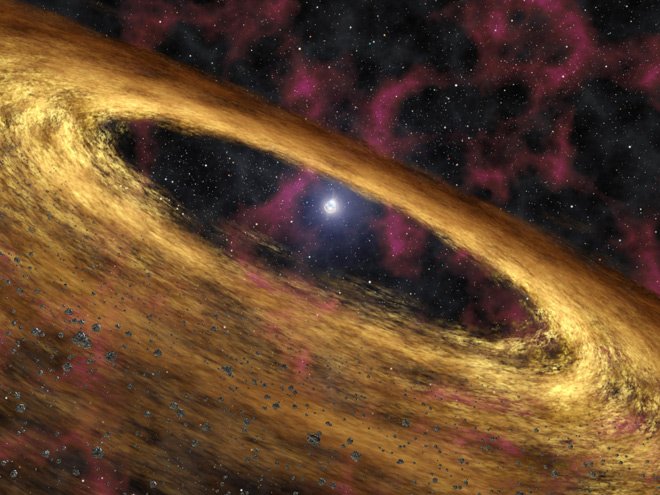A kugelblitz is a rather humorous term. The mysterious, foreign term refers to a black hole formed by a self-defeating mechanism. In a space smaller than a proton, light in the form of energetic gamma rays is concentrated. A high concentration of radiation has the same effect as a high concentration of matter. That is, it produces a black hole, which has a large density and gravitational force. It is, however, a light-based black hole, a creation that consumes its creator.
This form of black hole is potentially possible due to the relationship between energy and mass. They are interchangeable in basic terms, and gravity does not differentiate between the two. The equation e=mc2 shows how energy is contained in mass and memorialises this well-known relationship. There's no reason why energy — the equivalent of mass — wouldn't result in the same spinning, spherical body as a typical black hole, which is literally enough matter from a star collapse compressed into a very small region of space. Even the tiniest black hole will be bursting at the seams with capacity. Perhaps enough to fuel potential starships on their explorations of alien systems and stars.

Since they have the shortest wavelength on the electromagnetic spectrum, gamma-rays are the most energetic and strong source of light. As a consequence, they are shaped by some of the most violent and exotic events in the world. The brightest phenomena in the universe are gamma-ray bursts. The white-hot surge of a gamma-ray burst as it threads between two galaxies in the early universe is depicted on the left in an artist's impression. The image was created by ESO.
Following the use of the laser to direct light into a microscopic region of space, there is a brief burst of enthusiasm.
The needed pulse of light is one-tenth of a second's worth of the sun's production. That's a billion times more efficient than anything we can do right now. But it's not out of the question. The enthusiasm derives from the incredible pairing seen in sunlight, where the yellow or rosy tendrils both illuminate and heat the Earth. We will be heating the region of space to temperatures greater than the universe's temperature a fraction of a second after the Big Bang by focusing light to produce a kugelblitz. That will be hotter than Plank's 1.417 1032 kelvin temperature. In such a desperate situation, we have no idea what will happen. Our current understanding of physics may or may not apply, implying that our ideal black hole may or may not appear.
If we succeed, the black hole will continue to exist for the next five years, releasing a constant stream of Hawking radiation that will fuel our future starships. Despite its size, the black hole would weigh over 700,000 tonnes and emit hundreds of petawatts of energy during its brief life.
Another means of interstellar travel using black holes is the "Halo Drive." A ship will use a binary black hole device to move itself forward in this situation. Instead of petrol, the spacecraft would be propelled to relativistic speeds by a laser beam travelling around the black hole, which would return with extra energy. A spectacular halo will appear around the black hole as a result of the laser. In this artist's impression, a binary black hole device in space is portrayed. Jack Dole was the photographer.
In a paper published by the Center for Astrophysics, Jeffrey S. Lee proposes using a Dyson sphere to encircle the kugelblitz. A ship propelled by captured energy will travel at 72 percent the speed of light. The sphere was first proposed in the 1960s by physicist Freeman Dyson, who pictured a kind of absorbent shell around a star. This advanced shell will be capable of harvesting massive quantities of emitted energy, such as the trillions of nuclear bombs worth of energy emitted every second by the sun. There is, however, a delicate balance that must be struck. The Dyson sphere is a delicately crafted piece of art. The material must be absorbent while remaining lightweight, accessible while remaining durable, and not melted when exposed to radiation.
A kugelblitz drive is made possible by Hawking radiation, but it is also harmful. Though theoretical physicist John Wheeler first proposed the peculiar idea of a kugelblitz in a paper in the 1950s, it is not until decades later, when Stephen Hawking proposes black hole radiation, that we begin to see them as a potential interstellar travel engine. Over long enough time scales, black holes evaporate, meaning that they aren't absolutely black. They're brimming with neutrinos, photons, and other particles that float away, lowering the black hole's mass. We normally see supermassive black holes as starving, roiling monsters with their Hawking radiation obscured by interstellar gas clouds.
Smaller black holes, on the other hand, have a higher radiation power but last for a much shorter time. If they weighed less than 1015 g, primordial black holes from the beginning of the universe, for example, would have totally evaporated. A black hole vanishes from spacetime as it radiates faster than it can sustain its size.

Lee looked into making a Dyson cap, which would be a smaller version of the Dyson sphere. To prevent melting, the titanium cap will need to be more than 19 miles away, strategically placed at the front of the ship and with a precise thickness to provide the most effective absorption and acceleration. In his simulation with a starship weighing 5 x 108 kg, the amount of acceleration with a Dyson limit was not very impressive.
The Dyson sphere encircles the black hole like a polished shell. Energy is passed to the starship's heat engine as it passes through the vast and wintery universe. A slew of nearby stars are now within reach of the crew. It's difficult to tell what, if any, sound the black hole and its surrounding casing would make. It's a whirling, feeding, and evaporating subatomic mechanism, but it's so poorly known that we're not sure it'd cause any noise at all. Maybe it's the starship's silent spirit, which never shows something. It's lost in the clicking and creaking of the vehicle's metal, or in the crew's conversations, their gazes fixed on the setting sun.
MAKE SURE TO UPVOTE AND SUBSCRIBE FOR MORE SUCH ARTICLES!
Congratulations @arkanium! You have completed the following achievement on the Hive blockchain and have been rewarded with new badge(s) :
Your next target is to reach 50 upvotes.
You can view your badges on your board and compare yourself to others in the Ranking
If you no longer want to receive notifications, reply to this comment with the word
STOPCheck out the last post from @hivebuzz:
Support the HiveBuzz project. Vote for our proposal!